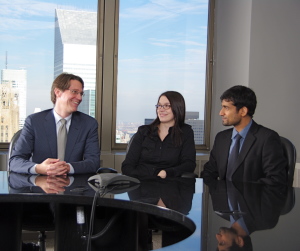“Transformation in the world happens when people are healed and start investing in other people.” —Michael W. Smith
By Elizabeth Stincelli, DM
Why Invest in Your Employees?
Your time is the most valuable gift you can offer, when you make time to invest in your employees, the work environment in your organization will become a much happier place. Happy employees are more productive and quality conscious which results in higher profits. They have better interactions with both colleagues and customers which results in better experiences on every level and they make better brand ambassadors for your organization. When you invest in providing experiences that instill a sense of pride and accomplishment in each employee, your employees will give 100% to the organization. So, how can you invest in your employees without spending a dime?
Engagement
Chuck Daly said, “There’s nothing like being involved with a team that can go that distance.” One of the best investments you can make in your employees is to engage them in their work tasks, their teams, and the organization as a whole. This engagement gives them a sense of pride and satisfaction in their work. Bring out the best in them by encouraging them to take control over their own work and to identify and find solutions to problems. Listen to what they value and want to accomplish. Don’t micromanage; give your employees the skills and resources they need and then empower them to design how their work gets done. The experience your customers have with your organization is directly linked to how engaged and satisfied your employees are; invest in the engagement of your people.
Opportunity
Bobby Unser believes, “Success is where preparation and opportunity meet.” Providing opportunities to grow, personally and professionally, in the organization is a valuable investment in your employees. When employees grow, your organization grows; when they excel, you excel. Your employees are your most valuable asset, don’t let them feel underutilized. Continually give them the opportunity to gain experience and control their own work tasks. Offer them mentorship opportunities and give them access to training and development resources. Prepare your people to move on to something bigger and better; invest in offering your employees opportunity.
Culture
Ken Robinson tells us, “The role of a creative leader is not to have all the ideas; it’s to create a culture where everyone can have ideas and feel that they’re valued.” Investment in your organizational culture is one of the most important investments you can make. When you develop a culture that inspires a sense of community and truly engages employees, you create a trusting and safe environment for collaboration. This type of culture is all-inclusive, embracing differences and a encouraging the sharing of ideas. It emphasizes the development of relationships and open communication throughout the organization regardless of title or position. A strong culture recognizes the value that every employee contributes to the success of the organization; invest in your culture.
Make the Investment
Bob Parsons advises, “Never stop investing. Never stop improving. Never stop doing something new.” When we think of making an investment, we see dollar signs. But, as leaders, there are many investments in our employees that we can make that won’t cost us a dime. And, the return we will see is immeasurable. Offer your employees engaging work, provide them with opportunities to grow, and create a culture that embraces a sense of community and the development of relationships. Make the investment in your employees and watch the return.
© 2015 Elizabeth Stincelli
Elizabeth Stincelli is passionate about recognizing and inspiring the leader in each of us. She is the CEO of Stincelli Advisors where she focuses on helping organizations engage employees and improve organizational culture. Elizabeth holds a Doctor of Management degree with an emphasis on organizational leadership.
Learn more about Elizabeth by visiting her website, stincelliadvisors.com and connect with her on Twitter @infinitestin, Google+, and LinkedIn. You can contact her by email at stincelliadvisors@gmail.com.










